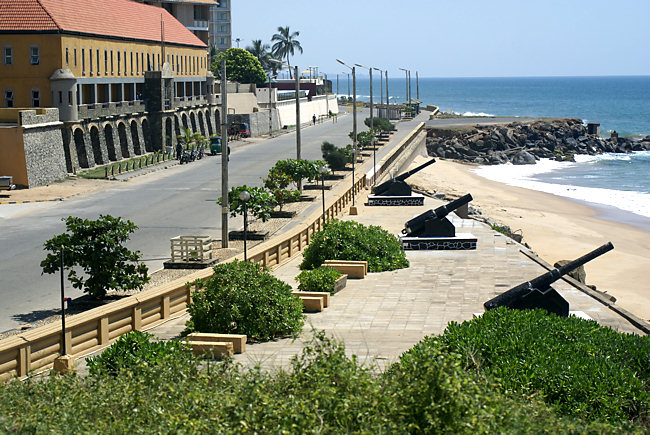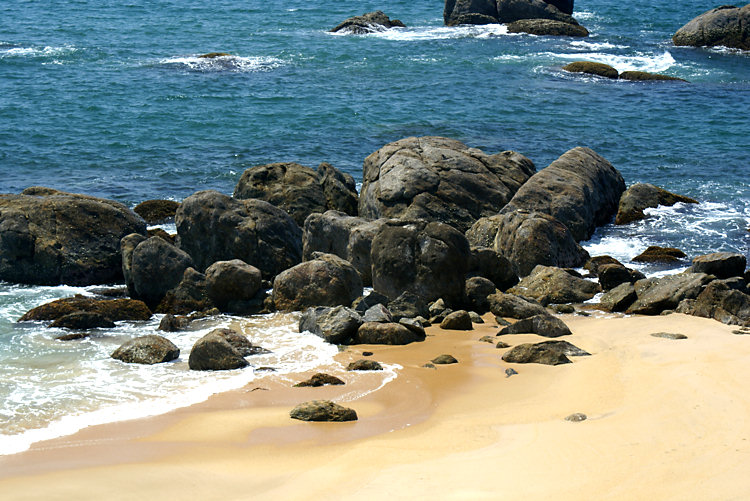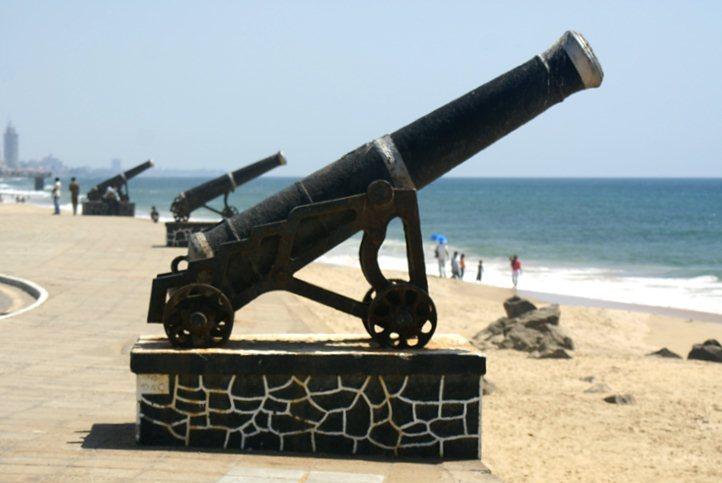Colombo Fort Marine Drive - Chaitya Road
One of the biggest surprises for me when visiting Colombo Fort in Sri Lanka was that it has such an attractive accessible coast line. Along the course of the old city fortress walls, now long gone, you will find little rocky alcoves with bright yellow sandy beaches.

Marine Drive Colombo Fort old Cannons and the Police Barracks
If you are visiting Colombo with children these are ideal playgrounds and a distraction from the hustle and bustle of the shopping streets. The main coastal road that runs along the western side of what was Colombo's old fort is called Chaitya Road. It is sometimes called Marine Drive. It is a long road that ends at the Sri Lankan Navy base.
You have to turn around at that point and come back the way you came. Chaitya Road starts at the roundabout opposite the old Ceylon colonial parliament building now called the Presidential Secretariat just north of the wide open green space called Galle Face.
The road is lined by a number of old ships cannons mounted on the pavement pointing out to sea. Have a look at the crests on the top of the cannon to try and work out what colonial nation commissioned their construction. Some are Dutch and others are British. These are all breech loading weapons. The wadding that contains the gun powder and the cannon ball would be rammed down the front barrel of the gun with a ram rod.

The beach alcoves in Colombo Fort on Marine Drive
Behind the buildings that line Chaitya Road is the President of Sri Lanka's official residence called Queen's House. The first grand house at this location was built by the Dutch and called Government House. Even after the British had captured Colombo the last Dutch Governor of Sri Lanka, Van Angelbeck, was allowed to continue to stay in the house.
The commander of the British Troops in colonial Ceylon, Major General Hay MacDowall moved into the building in 1804 after Van Angelbeck passed away. Sir Thomas Maitland was the first British Governor to use the building as an official place of residence. The Executive Council also used the building to hold meetings.
In 1856 a new building was constructed on the site. This was when it was given the name Queen's House in honour of Queen Victoria. This name was changed during independence to President's House when Ceylon was renamed Sri Lanka in 1972. Because of the recent troubles the gardens and house are not open to the public. The site is about four acres. The well maintained garden is used during state visits for garden parties to welcome visiting dignitaries. The building is now over 150 years old. It contains a valuable collection of antique furniture, ornaments and paintings.

Chaity Road old Cannons in Colombo Fort Sri Lanka
North of the President's House you will find the Gordon Gardens named after Sir Arthur Gordon who was British Governor 1883-1890. He gave the gardens as a gift to the people of Colombo to commemorate Queen Victoria's jubilee in 1889. There are many large trees that give welcome shade. In 1897 a marble statue of Queen Victoria was added to the gardens. Close to the statue there is a rock boulder on which is chiseled the Court Arms of Portugal and a Christian Cross that had been discovered in 1875 during building work in Colombo Harbour.
Travel books

